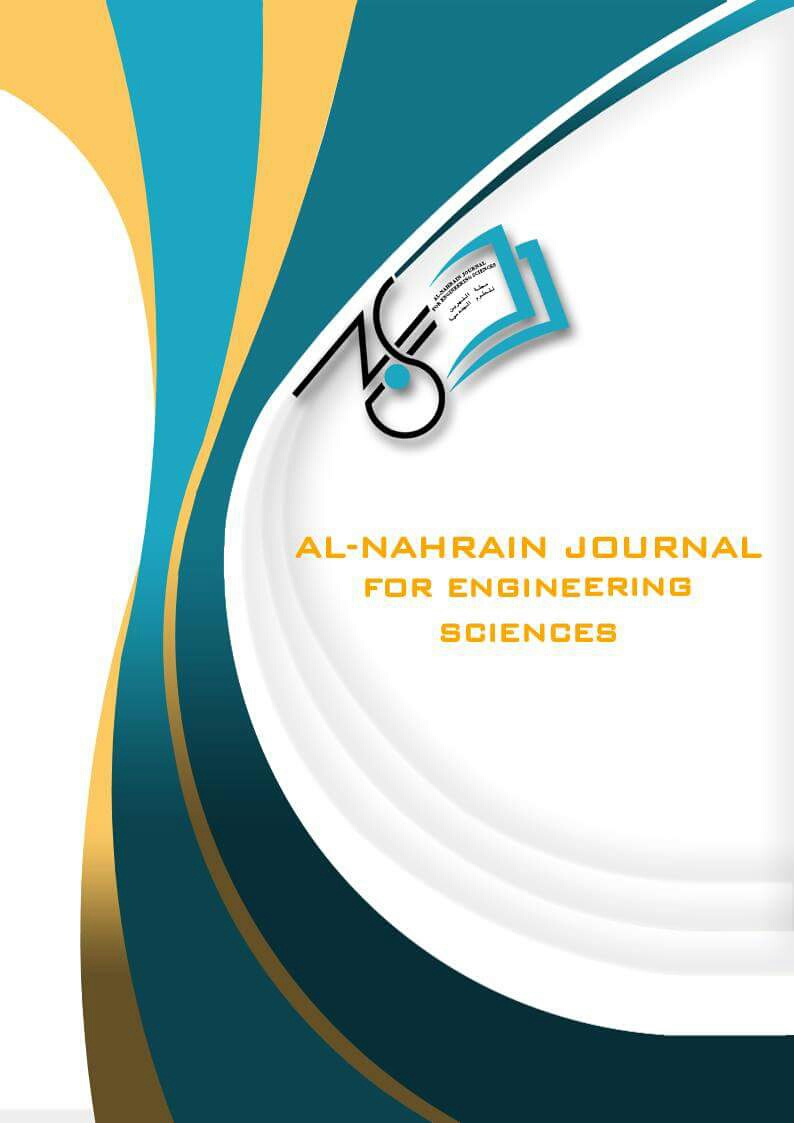Study the Effect of Hybrid Nanofillers Content on the X-ray Diffraction and Thermal Conductivity Properties of Epoxy-Based Nanocomposites
DOI:
https://doi.org/10.29194/NJES.26040286Keywords:
Nanoclay, MWCNTs, Epoxy, Hybrid, Thermal Conductivity, XRDAbstract
High-performance polymer nanocomposites utilizing different-sized nanofillers had a lot of interest recently. Due to their distinct structural, and thermal characteristics. Multi-wall carbon nanotubes (MWCNT) and nanoclay (NC) have the most interest among the numerous types of reinforcing as filler elements for a polymer. The formation of hybrid from MWCNT and NC at various loadings (0.5%, 1%, and 2wt%) on the characteristics of epoxy polymer have been assessed in this work. The specimens have been created using solution blending procedures with the addition of solvent ethanol at a ratio of 1:1 for dispersed nanofillers, and then they have been re-mixed with epoxy. Tests like X-Ray diffraction (XRD), and thermal conductivity were used to identify properties of epoxy. According to the test results, the thermal conductivity rise as the filler content rises at 1wt%, then start to decrease after 1wt%. The sample with the hybrid filler loading of 1 wt% produced the best performance. Since hybrid epoxy exhibits the best result of the thermal conductivity 135% over MWNT and NC nanocomposites of 1 wt.% reached 0.3568 W/m.K in the increased thermal conductivity property. By examining the EP nanocomposites XRD pattern. The hybrid of epoxy nanocomposites exhibits all of the NC and MWCNT characteristic peaks. Since interactions between the filler and the epoxy cause a shift in the peak location of 1wt%. Due to the homogeneity of the nanofillers entire epoxy matrix, there may be changes in the intensity or location of the peaks at 1% for 2θ= 20.13°, which corresponds to an interlayer distance of d=0.461nm.
Downloads
References
Muskopf JW. Mccollister SB. Ullman’s encyclopedia of industrial chemistry. New York: Wiley; 2002.
Z. Wang, F. Liu, W. Liang, and L. Zhou, Adv. Mater. Sci. Eng. 2013, 1 (2013).
J. Wu, K. Yu, K. Qian, and Y. Jia, Fibers Polym. 16, 1540 (2015).
Mahesh, Hosur, Tanjheel, H. Mahdi, Mohammad E. Islam, Jeelani, S. Mechanical and viscoelastic properties of epoxy nanocomposites reinforced with carbon nanotubes, nanoclay, and binary nanoparticles (2017). https://doi.org/10.1177/0731684417691365.
Gojny, F.H., Wichmann, M.H.G., Fiedler, B., Karl, S. Influence of different carbon nanotubes on the mechanical properties of epoxy matrix composites. (2005). https://doi.org/10.1016/j.compscitech.2005.04.021
A. Jumahat, C. Soutis, N. Ahmad, and W. M. Wan Mohamed, "Fracture toughness of nanomodified-epoxy systems," Applied Mechanics and Materials 393,206211.(2013).https://doi.org/10.4028/www.scientific.net/AMM.393.206.
M.A.M.a. Albozahid, Design of Novel High Modulus TPUs for NanoComposite Applications, School of Materials, University of Manchester, The UK, 2018, p. 277.
M. Albozahid, H.Z. Naji, Z.K. Alobad, A .Saiani, Effect of OMMT reinforcement on morphology and rheology properties of polyurethane copolymer nanocomposites, Journal of Elastomers Plastics(2021)
https://doi.org/00952443211006 .
M. Albozahid, H.Z. Naji, Z.K. Alobad, A. Saiani, Enhanced mechanical, crystallisation and thermal properties of graphene flake-filled polyurethane nanocomposites: the impact of thermal treatment on the resulting microphase-separated structure, Journal of Polymer Research 28(8) (2021).
S.A.H. Zoalfokkar Kareem Alobad, Muayad Abdulhasan Albozahid, The Effecting of Physical Properties of Inorganic Fillers on Swelling Rate of Rubber Compound: A review Study, Journal of University of Babylon for Engineering Sciences 27(1) (2019).
Gorga, R.E. and Cohen, R.E. Toughness Enhancements in Poly(methyl methacrylate) by Addition of Oriented Multiwall Carbon Nanotube, J. Polym. Sci., Part B: Polym. Phys., 42(14): 2690–2702(2004).
Sanaa Haider Mateab , Muayad Albozahidb .Study the Effect of Adding MWCNTs on the Hardness, Impact Strength, and Structural Properties of Composite Materials based on Epoxy Polymer.2021.
Tuan Anh Nguyen, Thi Mai Huong Pham, Thi Huong Dang, Thi Hanh Do, and Quang Tung Nguyen. Study on Mechanical Properties and Fire Resistance of Epoxy Nanocomposite Reinforced with Environmentally, Friendly Additive: Nanoclay I.30E. (2020). doi:10.1155/2020/3460645.
Sunil Kumar, and Arun Gupta. perpetration, and mechanical properties of MWCNTs, NC/epoxy .2021. https://doi.org/10.4995/jarte.2021.14239.
Junjie Chen, Xuhui Gao,and Wenya Song. 16.Effect of various carbon nanofillers and different filler aspect ratios on the thermal conductivity of epoxy matrix nanocomposites.2019.
ASTM 792D, (2006), Standard Test Method for Density and Specific Gravity, Annual Book of ASTM Standard, Vol. 09.01.
J. Tian, C. Yang, J. Yang, S. Hao, The correlated effects of filler loading on the curing reaction and mechanical properties of graphene oxide reinforced epoxy nanocomposites, Journal of Materials Science 56(5) (2021) 3723-3737.
M Hossein Pol, GH Liaghat and F Hajiaraz, Effect of nanoclay on ballistic behavior of woven fabric composites: Experimental investigation,2012.
Downloads
Published
Issue
Section
License
Copyright (c) 2024 Hajer Alhussiny, Muayad Albozahid

This work is licensed under a Creative Commons Attribution-NonCommercial 4.0 International License.
The authors retain the copyright of their manuscript by submitting the work to this journal, and all open access articles are distributed under the terms of the Creative Commons Attribution-NonCommercial 4.0 International (CC-BY-NC 4.0), which permits use for any non-commercial purpose, distribution, and reproduction in any medium, provided that the original work is properly cited.














